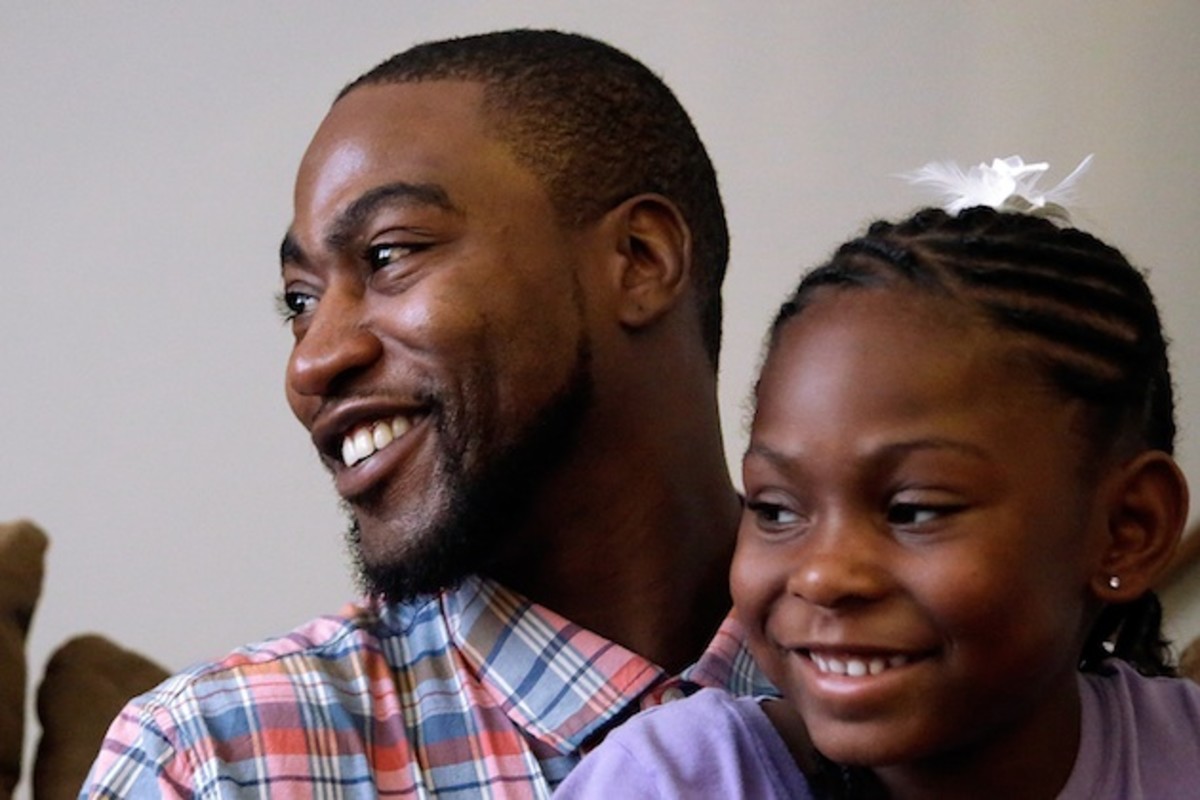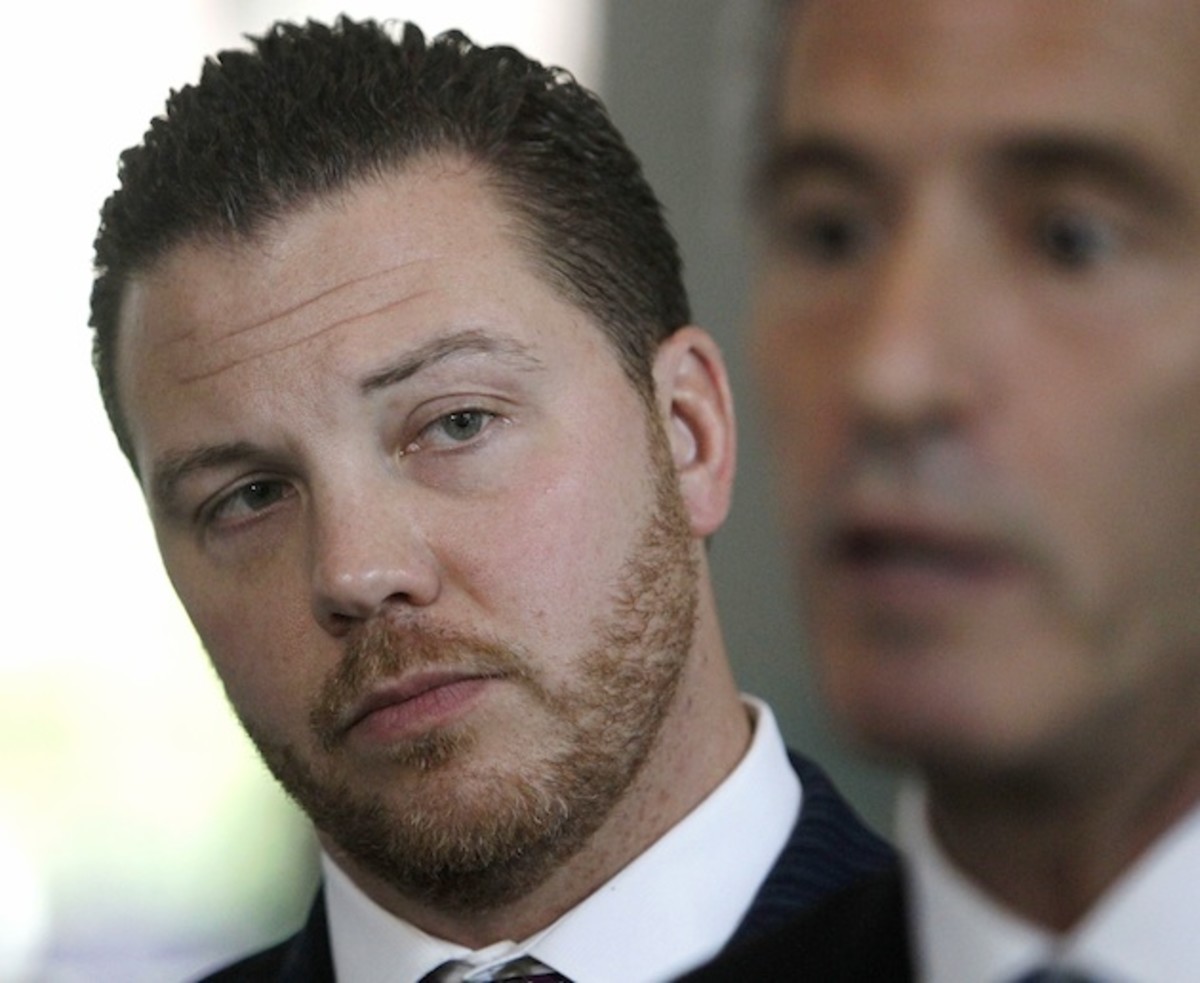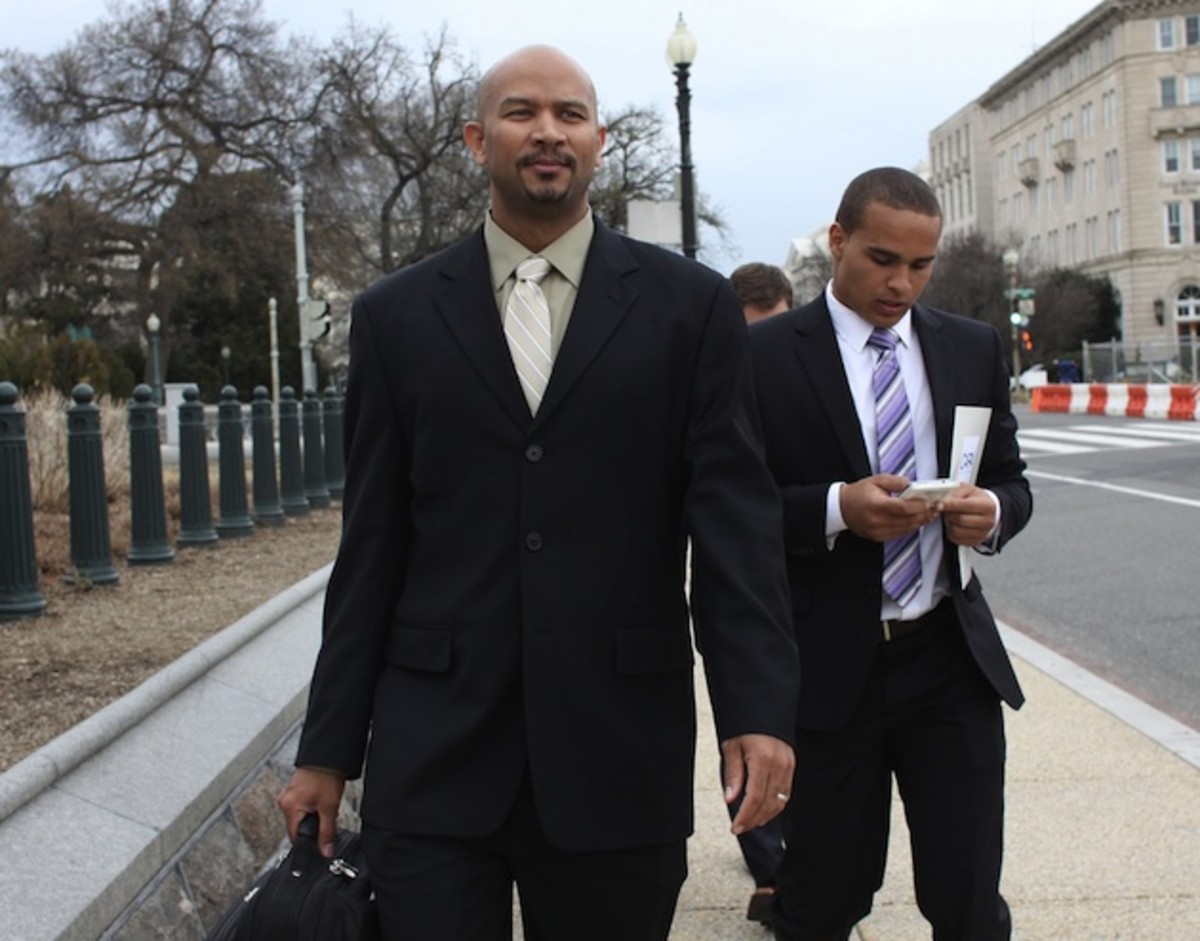At a crossroads: The state of college football and concussions

Search for Adrian Arrington’s highlight reel on YouTube, and you’ll come across the type of bone-crushing hits often praised by coaches and football fans alike. The Eastern Illinois defensive back instilled fear in opposing wide receivers who dared streak down the field — his field.
In one instance, Arrington can be seen feverishly sprinting toward an airborne ball, only to launch straight into the receiver’s chest. Like a brutal uppercut from a heavyweight boxer, this was Arrington’s form of a knockout blow, and the pummeled wideout lying helplessly on the turf only heightened the metaphor. In football parlance, Arrington was a ball hawk, a bruising safety who finished his collegiate career in 2009 with 154 tackles, 91 of which were solo.
But beyond his highlights, Arrington's brand of football — hard-nosed, punishing, unforgiving — has yielded more than its fair share of sinister side effects. During his collegiate career, Arrington, a team captain, suffered at least five concussions. He doesn’t remember any of them.
Arrington would find out about the hits the next day, typically from his teammates. As his career continued, he would sometimes forget what coverage a teammate had called out—schemes he’d practiced every day. He'd forget the score. On more than one occasion after a game, he had trouble recognizing his own parents.
But Arrington will always remember how he was cleared cleared to practice the day after each concussion.
Today, Arrington serves as an example of where football — and the NCAA in particular—stands on concussions, as awareness about the long-term consequences of head injuries continues to heighten. In five years, from 2009 to 2014, the NCAA reported a national estimate of 3,417 concussions in football. By contrast, when researchers at Harvard and Boston University surveyed 730 Football Championship Subdivision players in 2013, they found that only one in every 27 head injuries had been reported.
As the 2015 season unfolds, the NCAA is beginning to see significant pushback from several groups, including the National College Players Association (NCPA), numerous university medical teams, and scores of neurologists trained to better define and diagnose specific instances of concussions.
For football games this season, independent medical observers sit in the instant replay booth to help oversee head and neck injuries on the field. Elsewhere, a lawsuit seeking more player-safety mandates is in the briefing stage, while neurologists are busy redefining concussions using new techniques. Additionally, the Sony Pictures Entertainment movie Concussion, which stars Will Smith and is based on the story of the first neurologist to discover the condition now known as CTE, is set to release Christmas day and is furthering the conversation.
In many ways, Adrian Arrington has become the movement’s cautionary poster child. It's a burden about which Arrington has more than mixed feelings.
*****

After suffering his fifth concussion, sustained during his senior season, Arrington stumbled off the field. His father, George Arrington, came down from his seat in the bleachers and refused to allow him back in the game — ever again.
Arrington trusted his dad’s judgment. It was a heartbreaking decision, to be forced off the sidelines and toward only one future: graduation.
After that, as Arrington would later note, “things got real bad.”
During his senior season Arrington began having seizures, for which he sought treatment from a neurologist. His battles with memory loss became so severe that he had to leave school. Though he was studying with a Spanish tutor every day, he kept failing the tests.
“I’m in here trying to finish school and I have episodes of blackouts, depression,” Arrington said.
Eventually, after Arrington began taking classes again, the medical department at Eastern Illinois found a sufficient reason for him to take his Spanish tests the same day he’d studied the material. Arrington would go on to become the first person in his family to graduate college, earning a degree in recreation administration in 2010. Eastern Illinois did not respond to request for comment.
Stories like Arrington’s have become more and more common over the past decade, particularly with NFL players. In 2011 and 2012, more than 4,500 former pro players filed suit against the league, with some going so far as to accuse the NFL of fraud for its handling of the concussion crisis. In 2010, the NCAA formulated a Concussion Management Policy, which required to teams to create concussion protocols, but a consistent dose of poorly managed head injuries questioned how effective it is.
This caught the attention of Joseph Siprut, founder and managing partner at Siprut PC, a legal firm in Chicago, Illinois. Right away, Siprut noticed the NFL’s issues unfolding within the NCAA, but didn't see the same level of legal action.
“When Arrington came along, it was like 'right place at the right time' type of thing,” Siprut said over the phone in April.
In 2011, Siprut began laying the groundwork for a settlement for a head-injury lawsuit against the NCAA, ultimately filing the motion that September. Four years later, the lawsuit’s scope has changed firms and broadened to include all NCAA sports. The core of the settlement involves a request for a $70 million fund to test for brain trauma in current and former athletes — in contact and noncontact games alike. It also requires the NCAA to strengthen its return-to-play rules following a concussion.
Initially, a judge rejected the suit in December 2014 due to a lack of clarity in sections and funding questions. A new proposed settlement was filed in April 2015.
The new settlement mirrors the initial one, but includes tougher concussion-management and return-to-play guidelines, according to The Associated Press. In addition, the new proposal states that any money left over from the $70 million medical monitoring fund after the 50-year expiration date would go towards NCAA-funded concussion tests, research or treatment.
However, what the settlement is asking for isn’t why Arrington took legal action in the first place.
*****
Increased awareness, coupled with changes in the game—from rules to equipment—has altered the way football is played now.
Athletes throughout the nation have a much more in-depth education on head injuries than in previous decades. In 2010, the NCAA mandated that institutions ensure student-athletes are educated about the injury, and establish procedures to recognize, diagnose and manage concussions.
At the same time, most concussion-testing still relies on each player’s honesty. Indeed, the issue of self-reporting remains perhaps the biggest roadblock to the effective diagnosis and treatment of concussions. When a player sprains an ankle or twists a knee, he or she will almost always limp; it’s hard to fake walking on one good leg.
However, with a concussion, no clear and objective way of detecting it exists.
A team of Stanford engineers and physicians is trying to change that. Recently, the group began outfitting football players with sensor-laden mouth guards capable of measuring rotational accelerations on the head. According to Stanford News, they’re believed to be the first-ever documented concussions with six degrees of freedom, a scientific term used to describe the movement of a rigid body in three-dimensional space.
Fidel Hernandez, lead author of the study, says the goal behind the project was to inject better criteria into what constitutes brain injury, with the resulting data providing more accurate, and more consistent, analyses.
“Could the mouthguard provide info to a doctor? That’s definitely one of the goals,” Hernandez said. “Trying to form a device that is being calculated in real time and when it exceeds a certain threshold, passes that line of injury, that it lights up. Maybe a red light for a high risk of injury, yellow light for mild risk.”
Unlike many working on the cutting edge of concussion research, Hernandez remains steadfastly optimistic, and believes a usable detection device could be a staple in football within five years.
*****

Arrington, the defensive back, never had aspirations to play professional football. Instead, his goal was to use his degree to start a nonprofit organization. Now, because of long-term damages wrought by his concussions, the 28-year-old is virtually unable to work. Worse still, his disability payments aren’t near enough to cover the more than $100,000 he has accrued medical bills.
“Those bills aren’t going to go away,” Arrington said. “My illness is not going to go away.”
Arrington has also experienced run-ins with the law. In 2011, he pleaded guilty to aggravated battery and was sentenced to two years of probation, according to the Chicago Tribune.
Still, Arrington says he doesn’t hold a grudge against football, or even the NCAA. He merely wishes to use his own experience to help “prevent people from going through what I went through.” In May, Arrington posted a 16-minute video on YouTube, wherein the onetime heat-seeking safety offers his advice to kids about the demands of college and collegiate athletics, while wearing a Chicago Bears hat.
Of course, Arrington longs for change — a change his now former attorney, Joseph Siprut, says the proposed settlement will help bring about. But there remains fierce opposition, from the NCAA as well as from the NCPA, which has expressed concern over the lack of money the settlement would allot for former student-athletes like Arrington. The tension eventually caused Arrington to terminate his relationship with Siprut in June.
“The proposed settlement gives zero dollars to players,” said Ramogi Huma, executive director for the NCPA. “It would force the NCAA to do absolutely nothing.”

That message eventually found its way to Arrington himself, who issued this statement via a press release from the NCPA in June:
"The preliminary settlement is completely unacceptable, and I never agreed to it. I feel that I have been misinformed, and the preliminary settlement doesn’t address the reasons I filed the lawsuit in the first place."
Arrington is now represented by Shannon McNulty of Clifford Law Offices. In a recent email, McNulty stated the settlement “… in pertinent part, provides screening for concussion injuries, but does not pay for any actual treatment if a player is diagnosed. A player like Adrian has already been diagnosed, so the medical monitoring, depending on the final form it might ever take, would not really benefit a player like Adrian.”
Several other former college football players have since followed Arrington’s lead in opposing the settlement. The briefing of the respective positions is underway, according to McNulty. An attorney for the NCAA did not respond to request for comment.
“There is absolutely no opposition to medical monitoring being part of a settlement,” McNulty added. “But we believe there has to be relief given for players already diagnosed.”
*****
The increased scrutiny and media coverage has compelled colleges and universities to overhaul their medical staff operations.
However, unlike the NFL (and numerous state high-school associations), the NCAA has yet to institute specific rules governing full-contact practices, relying instead on outdated “guidelines” (in other words, suggestions) for full-pad practices. In response, researchers at the University of Virginia recently released a study — published in the Journal of Neurosurgery — that took critical aim at the governing body’s apparent foot-dragging.
While heightened concussion awareness has changed the game (along with many of its attendant medical procedures), the pace of that change is likely to remain an issue for years to come. The general consensus being that, until the powers that be concede to changes in how the game is played, no amount of piecemeal measures will be enough to rid football of its inherent dangers.
(Contributed to The Cauldron by Justin Wise.)

